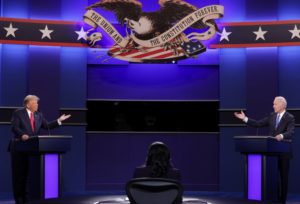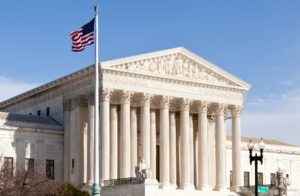The Supreme Court will soon decide whether the Consumer Financial Protection Bureau is unconstitutional

Next week, the Supreme Court will hear arguments in Seila Law v. CFPB. At its core, the case deals with the structure of an administrative government agency. But the Court’s decision in Seila Law either will prevent unaccountable government agencies from controlling major aspects of our economy, or will open the door for more bureaucratic workarounds to our separation of powers.
The importance of our separation of powers
The Constitution created three—and only three—branches of government: the legislature, which writes the laws; the executive, which enforces the laws; and the judiciary, which interprets the laws in individual cases. Outside of a few expressed exceptions (think of the Senate’s role in the appointment of Supreme Court justices), the powers vested in each branch are exclusive to that branch.
The Founders established America’s “separation of powers” because, as James Madison put it, the “accumulation of all powers, legislative, executive, and judiciary, in the same hands…may justly be pronounced the very definition of tyranny.”
Seila Law v. CFPB
In Seila Law v. CFPB, the Supreme Court will consider whether the Consumer Financial Protection Bureau (CFPB) violates the separation of powers. The CFPB is officially an arm of the executive branch, which is headed by the President. But the President cannot remove the CFPB’s director except “for inefficiency, neglect of duty, or malfeasance in office.”
Also, because the CFPB is funded by the Federal Reserve—instead of by Congress as the Constitution requires—the CFPB is virtually immune from oversight by both the President and Congress.
Why is this a problem? As I explained last year in The Hill
The CFPB may prescribe rules and regulations under various consumer-protection laws; enforce conduct that it may define as ‘unfair, deceptive or abusive’; and adjudicate its own enforcement actions and impose legal and equitable remedies. Right away, you’ll notice by that brief description that the CFPB captures the roles and responsibilities of all three branches of government under one roof. So much for separation of powers.
So let’s say your company is accused of violating a CFPB rule. The CFPB can sue you in court or — at its sole discretion — subject you to an administrative-enforcement hearing, administered by the CFPB. If you don’t like the CFPB’s in-house decision, you can appeal — to the CFPB’s director. And only after the director’s decision could you seek review in a court of law.
But the deck is stacked even then, because courts are required to defer to the CFPB’s factual findings and legal conclusions. The ultimate outcome of this concentration of discretionary power, together with its significant independence of the three traditional branches of government, is arbitrary and abusive government.
As Pacific Legal Foundation explains in a friend-of-the-court brief, this concentration of powers is unconstitutional. If allowed to stand, the CFPB will be allowed to write wide-ranging rules affecting tens of thousands of businesses, ranging from major corporations to small family-owned businesses. And if the CFPB targets a business, for any reason, it may charge that business with violation, try the business in front of a CFPB-employed arbiter, and level major fines and penalties—all without the due process protections that would be afforded in a court of law.
Americans have a constitutional right to be governed according to laws adopted only by the legislative branch and the right to a hearing in front of an independent judge. The CFPB’s structure violates those constitutional rights, and the CFPB’s structure prevents the President or Congress from righting that wrong.
The Supreme Court will hear oral arguments in Seila Law v. CFPB on March 3 and is expected to issue a ruling in June. Hopefully, the Court’s ultimate decision will rein in the unchecked power of the CFPB and ensure our separation of powers remains strong.









